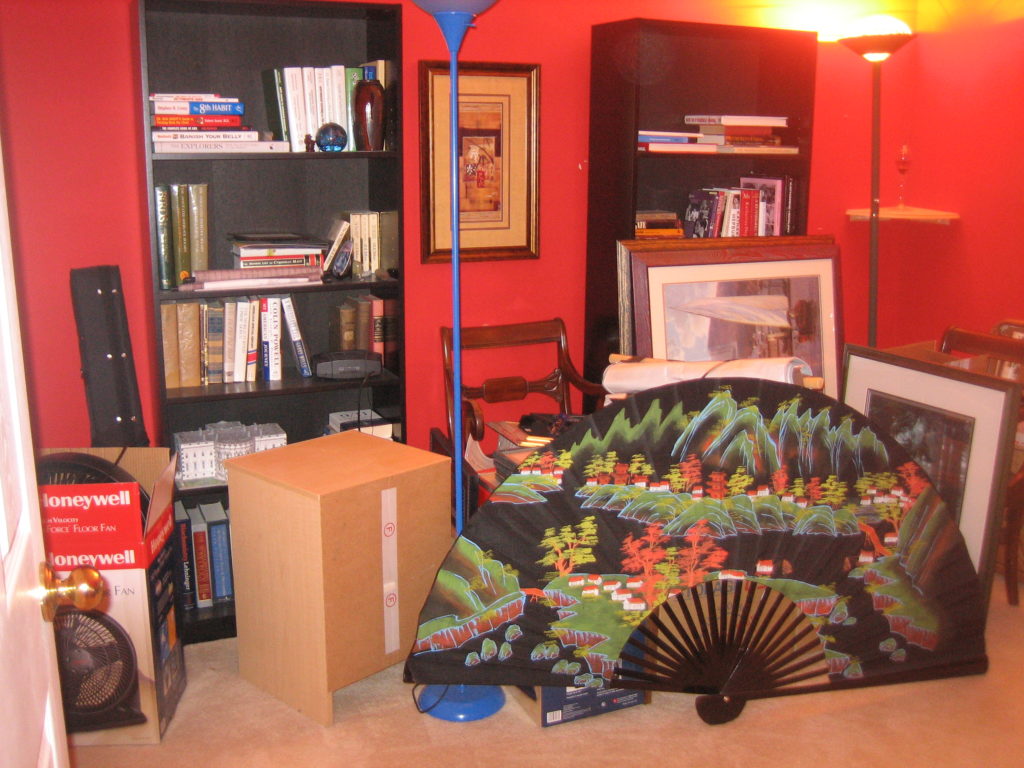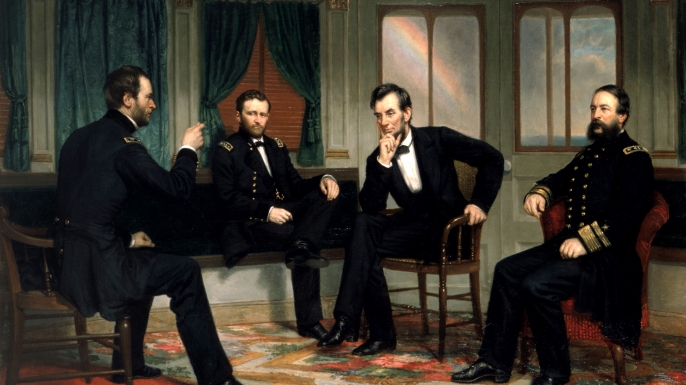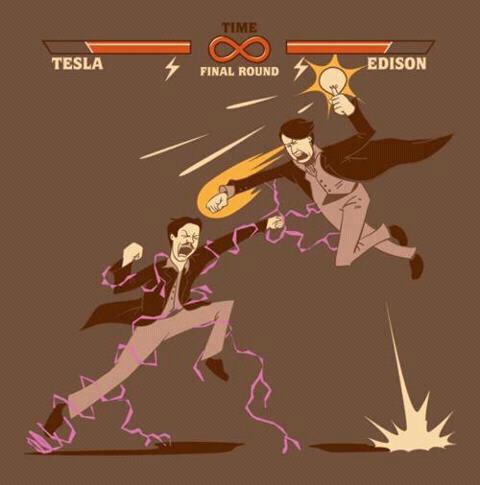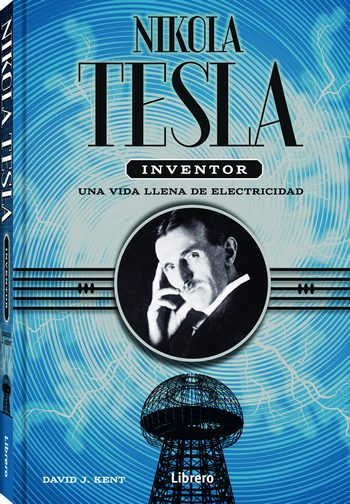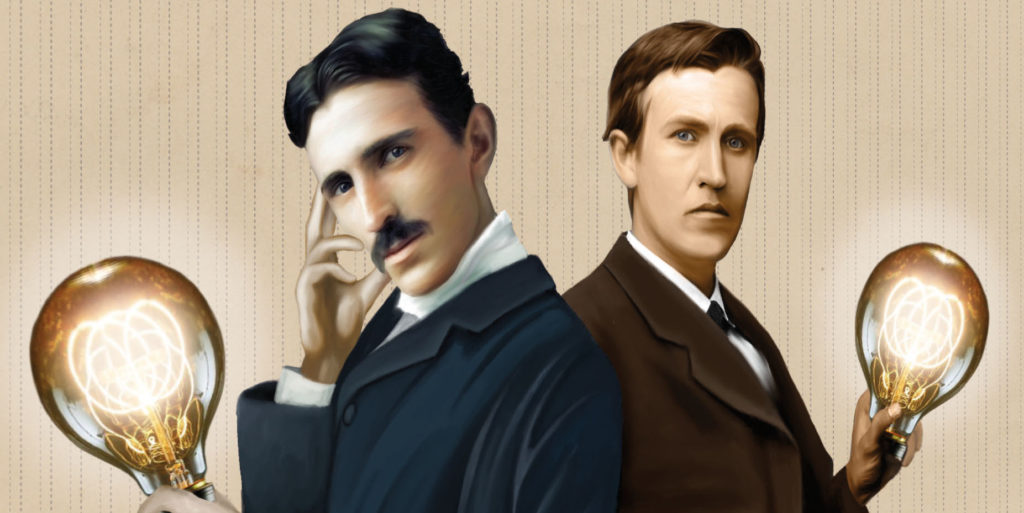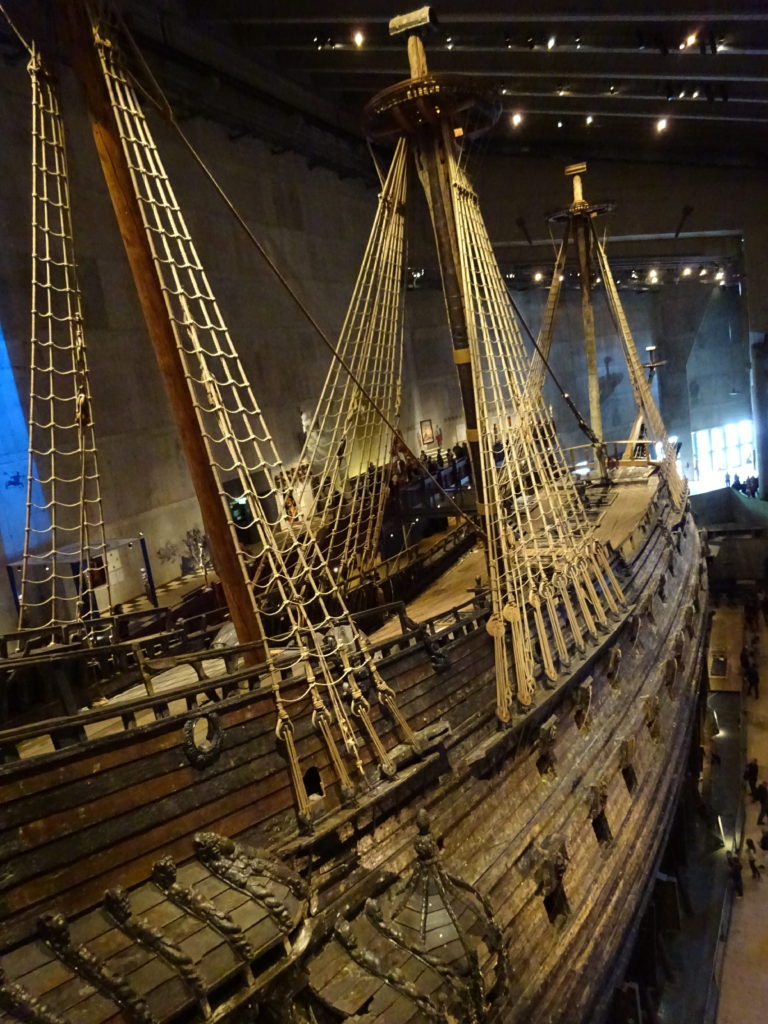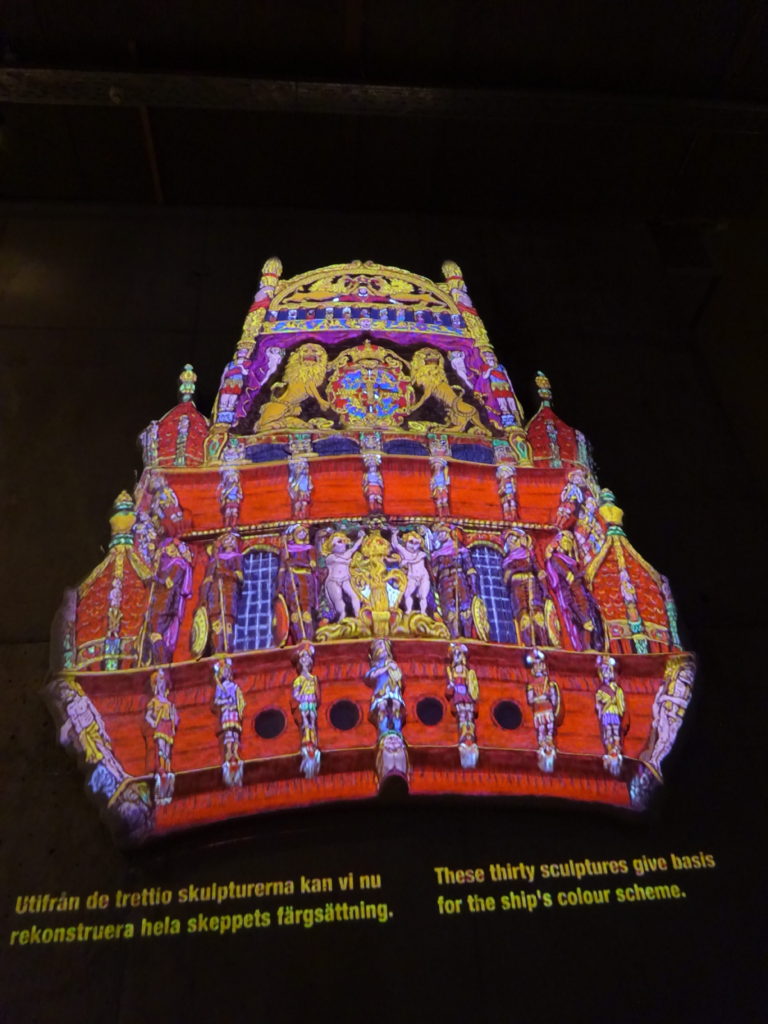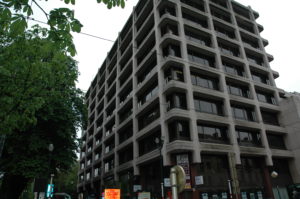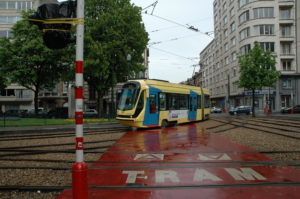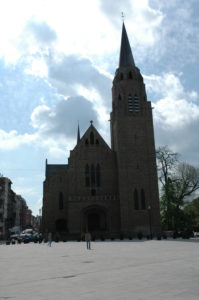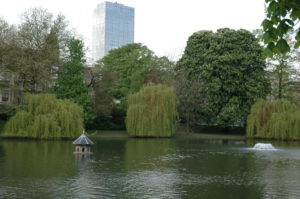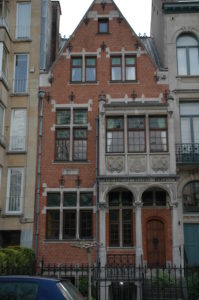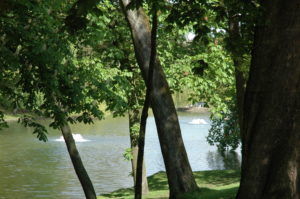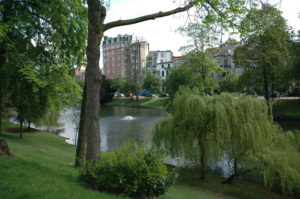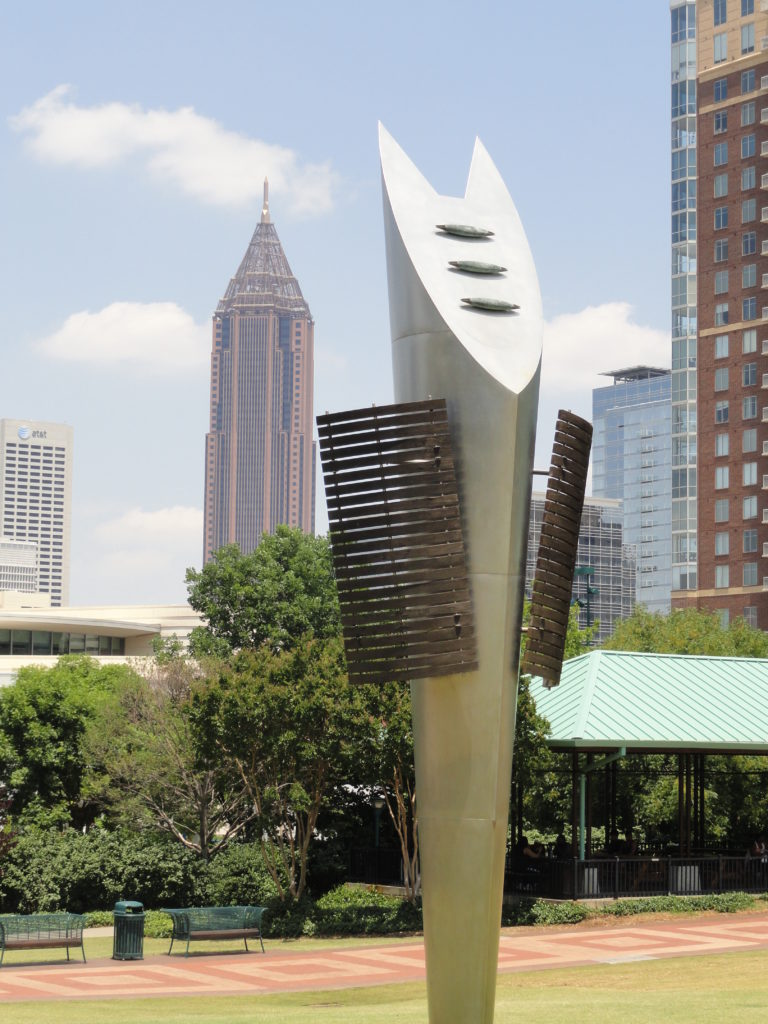When Abraham Lincoln took the presidential oath on March 4, 1861, he would become the first president ever to have obtained a patent. Patent Number 6469 was awarded to Lincoln on May 22, 1849 for a device to lift boats over shoals and obstructions. Lincoln writes in his patent application:
Be it known that I, Abraham Lincoln, of Springfield, in the county of Sangamon, in the state of Illinois, have invented a new and improved manner of combining adjustable buoyant air chambers with a steam boat or other vessel for the purpose of enabling their draught of water to be readily lessened to enable them to pass over bars, or through shallow water, without discharging their cargoes and I do hereby declare the following to be a full, clear, and exact description thereof, reference being had to the accompanying drawings making a part of this specification.
It was the only patent Abraham Lincoln ever received, and the only patent ever given to a President, either before or after their presidency. In contrast, Nikola Tesla had around 300 patents to his name.
Tesla may have had more patents (after all, he was an inventor), but Lincoln always had an interest in invention. During his career as a lawyer he was routinely sought for patent and technologically-dependent legal cases, and during the Civil War he often took matters into his own hands and personally tested some of the biggest technological advances in weaponry. Since he was not classically trained as a scientist – he barely finished one year of formal schooling – Lincoln called on experts to advise him. His biggest scientific adviser during the Civil War was Joseph Henry.
Calling Joseph Henry
Most people likely do not know it, but Nikola Tesla, Thomas Edison, Alexander Graham Bell, Samuel F.B. Morse, Michael Faraday, and others owe their fame, at least in part, to Joseph Henry.
As the Civil War loomed, with Washington D.C. a critical centrality in both the conflict and the potential solution, Joseph Henry was still getting settled into the red sandstone “Castle” that we have all come to know as the symbol of the Smithsonian Institution. The building itself, like the Institution, was relatively new, completed only about six years before Lincoln’s arrival. As the first Secretary of the Smithsonian, and later also as chair of the Permanent Commission to advise the Navy on scientific matters, Henry was one of Abraham Lincoln’s most trusted science advisers. Henry and Lincoln became good friends and worked together to address a wide variety of technological and scientific issues during the Civil War.
So what does Joseph Henry have to do with Nikola Tesla? It turns out, a lot, even though Henry died a few years before Tesla first set foot on American soil.
A precocious child with little interest in formal education, the young Henry stumbled across a book called Lectures on Experimental Philosophy, Astronomy and Chemistry; the book changed his life. Eagerly devouring the scientific principles it contained, Henry began a largely self-taught course in the sciences. Eventually he was taken in by a mentor at the Albany Academy and focused on the nascent field of electricity. Henry excelled in his studies and one day decided to improve upon a weak electromagnet design by William Sturgeon. While the original design used loosely coiled uninsulated wire, Henry wrapped the coils tightly with silk for insulation. The result was four hundred times the original strength. Further improvements led to the powerful electromagnet that became the standard in modern times. This was in 1827, more than fifty years before Tesla came to America.
A few years later, in 1831, Joseph Henry’s innovations led to the first machine to use electromagnetism for motion, effectively, the precursor to the modern direct current motor. It was a simple design, the linear rocking from side to side of a standard electromagnet, but it was the basis for the rotating motion motors eventually designed by Nikola Tesla for his alternating current system. Henry’s simple apparatus allowed him to discover the principle of self-inductance (electromagnetic inductance).
Henry did not stop there. His experiments demonstrated that using an electromagnet in which two electrodes are attached to a battery, winding several coils of wire in parallel worked best. In contrast, if multiple batteries were used, a single long coil was best. This discovery is what made the telegraph feasible.
So why is it we do not hear about Joseph Henry as the father of the electromagnet, or father of the telegraph, or father of self-inductance? In short, Henry was always hesitant to publish any of his work. While he delayed writing up his discoveries, and there were many, others were quick to publish, sometimes after hearing about Henry’s work and “borrowing” it for their own. Famed scientist Michael Faraday, who most credit as the father of self-inductance, actually got at least some of his ideas from a meeting with Joseph Henry; while Henry hesitated, Faraday rushed to publish first. Similarly, Samuel F.B. Morse gets credit for being the father of the telegraph even though it was Joseph Henry’s key discoveries that made it possible; again, after meeting with Henry, Morse took advantage of Henry’s hesitation to publish.
That gets us to Nikola Tesla. Like Thomas Edison and others who developed electric lighting and power in the 1880s and beyond, it was Joseph Henry (and Faraday and others) who had discovered the principles on which the later inventions were based.
In fact, Joseph Henry and Nikola Tesla share yet another claim to fame – both of them have been honored with an international scientific unit (SI). Based on his work with electromagnetic energy, the tesla (T), an SI unit of magnetic flux density and equal to “one weber per square meter,” was named in Tesla’s honor. His forerunner, Joseph Henry, was honored with the SI unit of inductance, the henry (H), for his earlier discoveries in electromagnetic induction.
There are many other connections between Abraham Lincoln and Nikola Tesla, which I discuss in the e-book from which the above is excerpted, Abraham Lincoln and Nikola Tesla: Connected by Fate. Joseph Henry, whose early discoveries with electromagnetism, electricity, and the telegraph, became the key principles upon which Nikola Tesla and others made names for themselves years later, was just one connection. Check out the book for more.
David J. Kent is the author of Lincoln: The Man Who Saved America, now available. His previous books include Tesla: The Wizard of Electricity and Edison: The Inventor of the Modern World (both Fall River Press). He has also written two e-books: Nikola Tesla: Renewable Energy Ahead of Its Time and Abraham Lincoln and Nikola Tesla: Connected by Fate.
Check out my Goodreads author page. While you’re at it, “Like” my Facebook author page for more updates!
Follow me by subscribing by email on the home page. Share with your friends using the buttons below.
Like this:
Like Loading...
